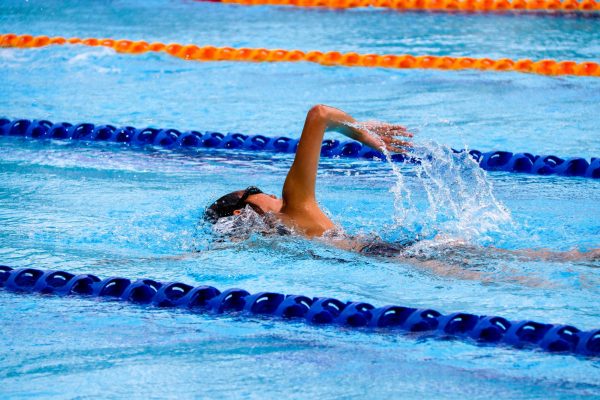The Controversial Ruling Over Transgender Athletes
From high school level athletics to the international stage, the participation of transgender athletes has been a frequently debated topic. One which recently sparked significant debate with the judgment by World Athletics, the Title IX Ruling in the USA, and a ban in the UK. While the 21st Century is often praised for its progressiveness, why have these new rules gone into place and what challenges have they met from the general public?
Starting on March 31st, 2023, “No female transgender athlete who had gone through male puberty would be permitted to compete in female world ranking [track and field] competitions” as announced by World Athletics President Sebastian Coe. While the previous rules had stated that transgender female athletes could compete “if their testosterone level is sufficiently suppressed”, specifically a blood testosterone level of 5 nanomoles per liter and has remained at this level or below for a minimum of one year. The new rules have changed that number to 2.5 nanomoles per liter and dictate that this level must have been maintained for two years. This ruling is incredibly similar to a World Aquatics restriction that bars “transgender women who had experienced male puberty could not compete in women’s events.”
The Athletics decision was made after a meeting with “stakeholders, including 40 national federations, the International Olympic Committee and trans groups” wherein they determined that “the science is insufficient to justify maintaining testosterone suppression for transgender athletes, the council agreed it must be guided by our overarching principle, which is to protect the female category” as announced by Sebastian Coe. This decision has been met with major pushback with some Transgender Rights Advocated calling it a violation of “fundamental human rights”.
CEO of Equality of Australia, Anna Brown stated that “such policies risk violating international human rights principles of non-discrimination”. A sentiment that is supported by Australian transgender athlete Ricki Coughlan who believes the new rules to be “fundamentally discriminatory” and are meant to “divide and exclude [transgender athletes]”. In regards to the science which Sebastian Coe deems “insufficient”, World Athletics has justified the ruling by saying that “science shows that anyone who has gone through male puberty retains male anatomical differences that provide an athletic advantage”.
This ruling has seemingly inspired other athletics organizations as the UK Athletics announced an “immediate ban on transgender women from competing in the female category across all its events” in March of 2023. “In a statement, UKA said it believed that it is fair for athletes who have gone through male puberty to be excluded from the female category in athletics but that athletics should remain an inclusive sport.”
Outside of Track and Feild, the United States announced a ruling for the participation of transgender athletes in all school sports called Title IX. This would mean that athletes whose “biological sex assigned at birth was male would be barred from competing on girls or women’s sports teams at federally supported schools and colleges”. This ruling would impact sports from the elementary level to Division 1 professional sports as well as allowing “schools to reject transgender athletes from competing on sports teams that align with their gender identity”. While a majority of elementary school sports will not be heavily impacted, as children grow and go through puberty the schools will have to decide whether they are willing to allow students into certain sports based on gender identity or strict biology. These decisions can and will differ for different sports and vary across the country.
Many LGBTQ Rights Activists have argued against the ruling stating that the “proposal would introduce new levels of discrimination against transgender athletes and gender policing for all female-identifying athletes”. That being said, it has been welcomed by some politicians, including Florida Education Commissioner Manny Diaz Jr. who stated, “We will never allow boys to play in girls’ sports. We will fight this overreach tooth and nail. And we will stop at nothing to uphold the protections afforded women under Title IX.” This is in addition to “a small group of demonstrators gathered outside the NCAA Convention in San Antonio to protest the inclusion of transgender women athletes in women’s college sports”. All in all, it is a complicated issue with several loopholes that will be used in different ways by different states. Especially because the Supreme Court has yet to weigh in on the controversy, meaning that it is up to state legislatures to decide how they wish to uphold the law and will not become a nationwide acceptance or dismissal of transgender athletes. It is unlikely to become law as President Biden is likely to veto the law but it has major support in the House of Representatives.
These controversial rulings highlight a sporting issue that will not be easily solved and will always be upsetting to one or more parties. It is difficult to determine if there is one international rule which should be enforced in all sports or if regulations should be more sport specific. The International Olympic Committee “decided that they will leave the final decision to the governing body of each sport, encouraging category qualifiers” as opposed to previous rules which were based on hormone levels. With several different approaches and opinions in the extremes, it’s no wonder this issue is highly debated, making the outcome controversial and contested by groups on both sides of the argument. Maybe there is no singular right answer, but it’s safe to say that this issue is far from over and won’t be going away any time soon.










